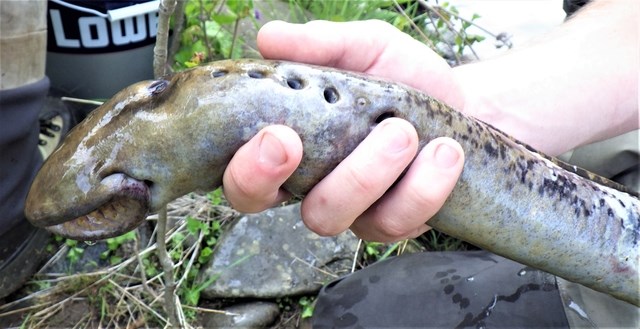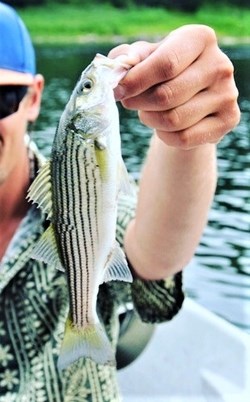Anguilla rostrata – Native
Family: Anguillidae
The American Eel is an important keystone species in the Upper Delaware River. American Eels are catadromous, meaning they migrate down river to spawn in the ocean. They hatch in the Sargasso Sea within the Northern Atlantic Ocean but then travel to freshwater streams where they mature and spend most of their lives. After years or even decades, they eventually return to the Sargasso Sea to spawn. American Eels are generally carnivorous and feed on insects, fish, fish eggs, crabs, worms, clams, and frogs.The Eastern Elliptio mussel (Elliptio complanata), which is important for keeping the waters of the Upper Delaware clean through its water filtering capacity, uses the American Eel as its main host for reproduction. Eastern Elliptio larvae, known as glochidia, attach to the gills of the American Eel and remain there until they metamorphose into juvenile mussels.







